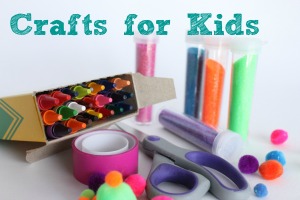
When it comes to raising young children, one of the most underrated but impactful relationships is the one between parent and caregiver. For families with children in daycare, this connection goes far beyond pickup times and daily reports. It becomes a vital line of communication that can influence a child’s emotional, social, and cognitive development in meaningful ways.
The phrase “on speed dial” may sound dramatic, but for many parents, it accurately reflects the trusted, collaborative role a caregiver plays. A strong parent-caregiver partnership doesn’t just support daily routines—it builds a cohesive environment where the child feels seen, safe, and supported.
Explore why caregivers should be more than friendly faces at drop-off and why choosing a high-quality program with a research-based curriculum and family engagement practices, helps create the kind of partnership that nurtures every area of a child’s growth.
The Caregiver as a Partner in Development
Children in daycare spend a large portion of their week in the care of early childhood professionals. These caregivers become not just observers of development but active participants in it. They notice patterns in behavior, language growth, social milestones, and emotional shifts.
Because they see children in group settings and within structured routines, caregivers can offer insights that complement what parents observe at home. For example, a child who’s quiet at home might show strong leadership tendencies in group play. Or a toddler struggling with transitions might be responding well to a new visual cue technique introduced in the classroom. When caregivers share these observations, parents gain tools to better support their child, and vice versa.
When communication is ongoing, the caregiver becomes someone a parent can turn to with questions, feedback, or concern. It’s not about constant texting—it’s about purposeful connection and shared understanding.
Consistency Between Home and Daycare

Young children thrive on routine and consistency. When the approach to discipline, encouragement, or communication aligns between home and daycare, children experience a sense of security and predictability.
That’s where collaboration becomes essential. If a child is experiencing a developmental phase—like separation anxiety, biting, or potty training—both environments can coordinate to support them more effectively. Parents might let caregivers know about major changes at home (like a new sibling or move), and caregivers can prepare for emotional reactions or behavioral shifts during the day.
This back-and-forth helps prevent misunderstandings and supports continuity. The child isn’t starting from scratch each morning; they’re walking into a space that’s in sync with the rest of their world.
Trust Is Built Through Shared Goals
Trust doesn’t develop overnight. It’s the result of many small moments—quick updates, honest conversations, shared laughs about a child’s quirks or stories. But most of all, it grows from a shared investment in a child’s well-being.
Choosing a program that centers family involvement and child development makes this partnership easier to foster. At Bright Horizons, for instance, teachers are trained not only in early childhood education but also in how to engage families meaningfully. Parents are viewed as the experts on their children, while educators bring professional insight into child development stages and curriculum-based learning.
When both parties approach each other with respect and curiosity, a true partnership forms—one where feedback is welcomed, collaboration is routine, and the child is at the heart of every conversation.
A Curriculum That Guides More Than the Day
Many parents initially view daycare as a place where their child will be safe, socialized, and entertained while they’re at work. And while all of those things are essential, high-quality daycare is also a place where foundational learning begins.
With a structured yet flexible curriculum, children engage in activities that promote early literacy, math reasoning, fine and gross motor skills, empathy, and problem-solving. These lessons aren’t taught in a rigid way—they’re woven into the rhythm of the day through purposeful play, storytelling, movement, and exploration.
When parents are informed about what their child is learning, they can reinforce those concepts at home. If a child is learning about sorting colors in the classroom, parents might play a similar game with socks during laundry time. If caregivers are helping children identify emotions through books or puppet play, parents can extend the language of feelings during bedtime talks.
That continuity deepens learning and creates a meaningful connection between the two environments children spend the most time in.
Emotional Growth Happens in Relationship
One of the most important outcomes of a strong parent-caregiver connection is emotional development. When children see the adults in their lives working together, they feel more confident and secure. They learn that it’s okay to ask for help, to express feelings, and to depend on trusted adults in more than one space.
Moreover, when caregivers and parents communicate openly, they’re better equipped to support children through difficult moments. Whether it’s a behavior that emerges suddenly, anxiety around transitions, or a developmental delay that needs closer attention, working together ensures that the child isn’t navigating challenges alone.
This emotional scaffolding helps children build resilience—the ability to cope, adapt, and grow through change.
Open Communication Reduces Anxiety
For many parents, especially those sending their first child to daycare, the experience comes with big feelings. Guilt, fear, uncertainty—it’s all valid. But having a trusted caregiver just a call or message away eases that emotional load.
Knowing that someone is observing your child with care, and will communicate clearly about their needs and progress, provides reassurance. It becomes easier to focus at work or tend to other responsibilities when there’s confidence in the environment the child is in.
And the best part? That communication isn’t just about problems. It also includes joyful moments—firsts, funny quotes, unexpected victories. These small updates allow parents to stay connected to their child’s day even when they’re not present for it.
Building a Lasting Relationship
Caregivers often play a long-term role in a child’s life. In quality programs, teachers stay with children through key transitions—from infant to toddler rooms, toddler to preschool—and develop real relationships that endure beyond a single school year.
By maintaining a strong connection with caregivers, parents help foster continuity for their child. It becomes a safe, familiar, and warm foundation that supports emotional security and academic curiosity alike.
These relationships can also serve as a model for future partnerships with teachers and educational professionals. The early trust built between parent and caregiver often lays the groundwork for open communication and advocacy in later school years.
Why It All Comes Down to Collaboration
In the end, the goal is simple: to help children thrive. But thriving doesn’t happen in isolation. It’s the product of thoughtful, responsive caregiving and engaged parenting working together.
So yes, a caregiver might be on a parent’s speed dial. Not because of constant emergencies or dependency, but because communication is central to doing what’s best for the child. It’s a symbol of trust, respect, and shared commitment.
Families who approach daycare as an extension of home—not a replacement for it—are better positioned to support their children through the critical early years. And when the daycare is grounded in evidence-based practices, professional care, and a culture of communication, parents can step into that partnership with confidence.
Bright Horizons makes this level of collaboration possible by prioritizing developmentally informed care and family involvement. When both sides invest in the relationship, the result is a stronger foundation for children to grow into confident, capable learners.
And that’s something worth dialing into.


















